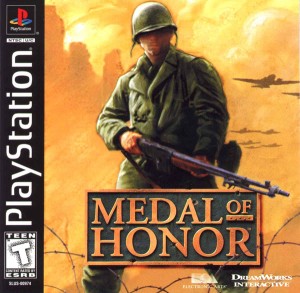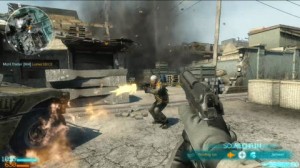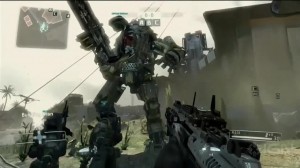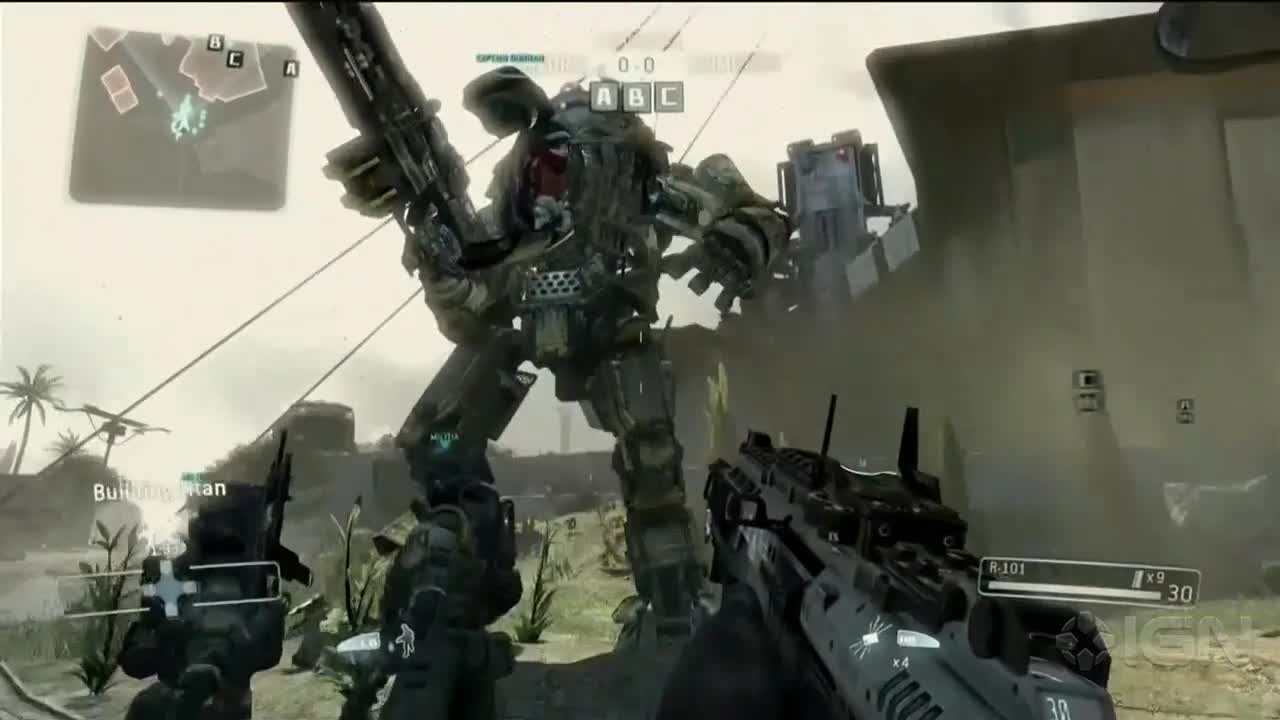If you saw this year’s coverage at E3, one of the games that blew you away was “Titanfall”- a game combining sci-fi, military fps, parkour and mech combat in ways we’d never imagined. In this game, you play a colonist fighting for independence, but he’s no ordinary soldier- he’s a pilot, trained in fighting people while controlling the Titan Mechs. Just imagine the multiplayer…
However, the story of “Titanfall” is the story of Respawn Entertainment, and in order for us to know that story, we have to go back in time nearly 15 years. That story doesn’t just go back to their famous court case in 2010, but it can actually trace its roots back to “Saving Private Ryan”. You don’t need a film degree to know that Steven Spielberg has a bizarre fascination with the Second World War, but this movie made it clear. The visceral combat scenes were beautiful to watch, and it occurred to him that it would have translated flawlessly to a video game. For this, he contracted video game titan Electronic Arts (EA) to make what was essentially a video game version of this movie, entitled “Medal of Honor”.

The game was a landmark for the newborn MIL-FPS genre. The long running series spearheaded the barrage of WW2 shooters in the decade that followed, but it had an unintended consequence. In 2002, after the release of the third MoH game, “Allied Assault”, development heads Jason West, Vincent Zampella and Grant Collier were fired for “breaches of contract and insubordination”, when really they disputed ownership of the “Medal of Honor” IP. Remember that phrase, “breaches of contract and insubordination”, you’ll see it again.
Angry, these three guys went to competitor and rival Activision to get even. Activision wanted in on the WW2-FPS action, so they helped these three guys create Infinity Ward, a name that I’m sure you’ve heard. To compete with Medal of Honor, they started creation of “Call of Duty”, it’s name taken from the Congressional Medal of Honor (in order to be awarded the MoH, you must have “risked your life to save another, going above and beyond the call of duty). The two were pretty much neck and neck, bringing in Treyarch for the third game so they could blow everyone out of the water in 2007, with “Call of Duty 4: Modern Warfare”, the last numbered installment of the series.
This was the first time we got to play a good MIL-FPS set in the modern era. It was the first to use the cinematic elements that made CoD so iconic, and the first to use a truly complex multiplayer ranking system. It dethroned HALO 2 as the bestselling game, and it introduced us to the beloved characters Capt. Price, Soap MacTavish, and Nikolai. It outsold the latest Medal of Honor, “Airborne”, in spite of its innovations into the series.
This inspired the people at EA-LA, renamed Danger Close (due to the introduction of DICE), were forced to change their strategy. To compete with “Modern Warfare”, they went back to their guns with authenticity over cinematic gameplay. They went to US Military Special Operators that had participated in Operation Enduring Freedom (OEF) for a game that put you in the role of several operators that had participated in Operation Anaconda, containing the seize of Bagram Airfield, the Battle of Shah-i-Kot, and the Battle of Takur Ghar (a battle that holds the record for the largest engagement to primarily utilize Special Operators). It was the first game in the series to garner an M rating from the ESRB, and it got its fair share of attention, but for a different reason.

Video game violence had been the focus the previous year, when it was leaked that one level of “CoD: Modern Warfare 2” would have you participating in a terrorist shooting spree on an airport. This time, it got attention for different reasons- while the campaign was handled by Danger Close, the multiplayer was handled by DICE (resulting in the different game engines- Danger Close uses a heavily modified Unreal 3 engine, but DICE used their Frostbite 2 engine), and this had an interesting side effect. As you probably remember, it was leaked that the multiplayer featured two factions- US Army Rangers, and the Taliban. Not a Taliban knock-off like CoD used, their name was Taliban. People flipped, getting to the point where the military announced Gamestops on their installations were forbidden from selling the game, infuriated by the idea that Americans could play as the Taliban in a video game. I remember people rejoicing the idea. When I took my first enlistment physical that October, an Officer candidate was saying that he wanted to buy the game just for that reason.
Regardless, it still lost to the new CoD, “Black Ops”, due to (you guessed it) the multiplayer component, on top of the Cold War backdrop and quality Vietnam missions. However, this was going on at the same time as something else you should remember.
Rather suddenly, Activision announced that it had fired Infinity Ward’s CEO and President Jason West and Vincent Zampelli, claiming “breaches of contract and insubordination”. Over the years, they’d found out the hard way that Activision isn’t a company you want to work for. The executives look for any way they can to control your game to their corporate specifications, often getting to the point where the developers have little control over their own game. As a result, West and Zampelli had started talking to their old bosses at EA to see if they could come back with a better setup. When the executives at Activision-Blizzard found out, they were so furious that they claimed West and Zampelli were being insubordinate. This resulted in a series of suits and countersuits, until it was ultimately settled out of court. In the end, Activision-Blizzard got what they came for- control over Infinity Ward and Call of Duty, but they lost the ability to make a game primarily set pre-1950. West and Zampelli got what they wanted- enough cash to set up a new studio, EA taking them back with open arms, and the ability to bring over anyone who wanted to quit CoD to work on something new.

They spent a year brainstorming and testing to find something new and exciting that also played to their strengths. What they got was “Titanfall”- a game taking the cinematic feel of “Call of Duty”, the sci-fi weapons from “Killzone”, and the first-person mech combat from “F.E.A.R. 2: Project Origin”. What we get is “Titanfall”- a story of a colonial pilot, able to use jets to drop from orbital ships, run on walls, and take down enemy Titans (or kill the pilot and take the Titan for himself). The game is set up so that you can’t play as just a pilot or just a Titan, and you can even customize your own Titan (like the armor in Halo: Reach, the Titan you customize is used in both the campaign and the multiplayer). I’m stoked, Zampelli’s had a long run of successful games, and he’s worked hard to get his development team where it is.



